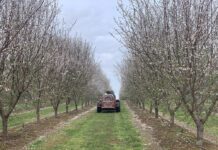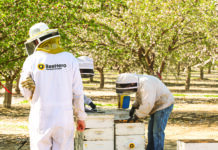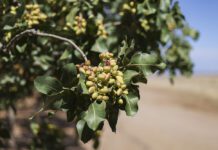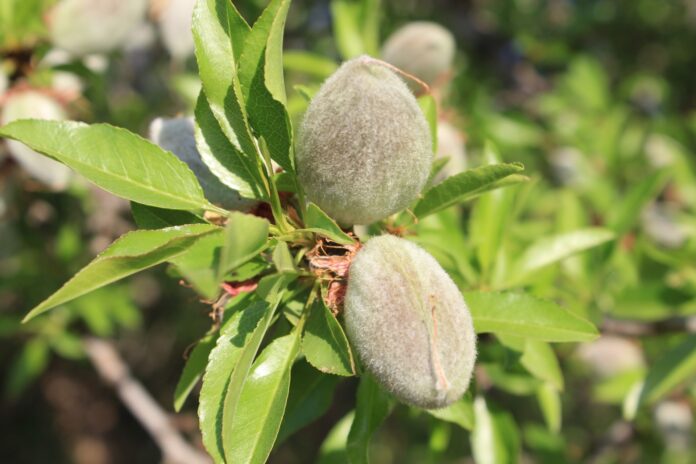
Decisions to cut out completely or modify orchard management practices are being made to save on input costs.
Almond growers and researchers said that depending on the unique characteristics of an orchard, that modification or elimination of certain cultural practices won’t necessarily adversely affect crop production.
Asked what they stopped doing in their orchards or what they now do differently, panelists described the changes in irrigation practices, nutrition, insect and disease management and pruning. Garrett Bowman with Bowman Management said business goals drive those decisions. Bowman, who is also an almond grower, said cuts should resemble ‘minimal invasive surgery’ with a short recovery period.
“Small cuts as needed, but use research,” he advised.
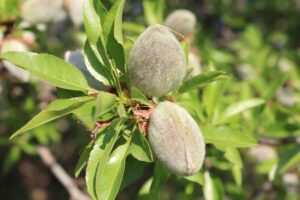
Automation, Nutrition Costs, Savings
Automation of irrigation systems allows for reduced labor and energy costs. Off-peak hours can be used along with more frequent, short-duration irrigations.
Soil moisture sensors and plant sensors can help with making good irrigation decisions, Bowman said. Money can be saved by only placing plant stress sensors on pollinators. A consistent maintenance schedule for irrigation systems to endure distribution uniformity is not a place to cut.
When it comes to nutrition decisions, Bowman said to avoid the ‘just in case’ thinking. No big blanket cuts should be made, but decisions should be made on leaf tissue analysis. In high-yielding orchards, the potential for saving on nutrition is small. In older orchards, more savings could be realized with delayed or omitted applications.
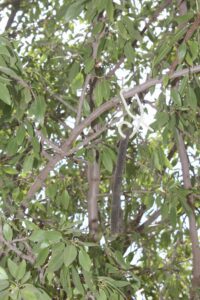
Brandon Rebiero of Gold Leaf Farms in Modesto suggested cuts be made in defense practices but not with offense.
There is also the ‘pride factor’ in farming, he noted. Growers with orchards along main roads may care a little more about how the orchard looks to passersby.
Rebiero said there may be some ‘flaws’ in standard nutrition applications. With potassium, the standard 500 lbs. SOP may be needed with a 2,500-pound crop but may not be efficient with a smaller crop. He said liquid in-season applications that can be adjusted to the crop size can save on K costs. That decision can save money if there is a crop loss due to frost. Some postharvest nutrition sprays can be eliminated if leaf tissue samples show adequate levels.
2023 was a terrible year for navel orangeworm damage, Rebiero said, but he pointed out an interesting report from processors who have organic blocks. Those blocks had some of the lowest NOW damage rates, he said, and he attributed it to thorough orchard sanitation including hand poling. Rebiero said mating disruption is highly effective in controlling NOW and can allow for skipping a spray application. With chemical control of NOW, there is an economic threshold. Rebiero said a 2,000-pound crop at current prices can take 5% damage and lose 500 pounds, equating to the cost of a NOW spray.
Take Risks with Defense
You can take more risks with defense, Rebiero said, but don’t sacrifice yield. He said they spray borders as much as they can and advised speaking with neighbors about their NOW control (or lack of it). Orchard history is the best indicator of NOW damage, he said. May sprays can be cut, he said, but you must watch traps for trends.
Panel moderator Sebastian Saa noted rollout of a voluntary neighborhood NOW control program in 2023 was intended to connect neighboring growers and PCAs interested in or currently using NOW mating disruption. The goal is to help growers and PCAs create larger orchard blocks better suited to the mating disruption system.
Pruning is a practice that does not pay, most panelists agreed. Although a high percentage of growers do prune their mature trees, research has shown this orchard practice does not enhance production.
UCCE Farm Advisor Roger Duncan, a panelist on a session on Optimizing Critical Orchard Practices at The Almond Conference, said his research over the last 20 years has shown pruning reduces yield in almonds.
Pruning is defined as a dwarfing process that reduces sunlight capture, fruit bearing area and root growth. It is a yield-reducing practice.
It is best to train very young trees for good structure and then abandon pruning except for safety purposes, equipment access and removal of broken and dead branches.
A grower’s reason to prune should justify the expense and potential yield loss, Duncan said.
With orchard spacing, Duncan said the best configuration is still up for debate, but he pointed out some benefits to tighter spacing: less need for pruning, easier to shake at harvest with fewer mummies and less shaker damage and better spray coverage is achieved.
Orchard weed control, Rebiero said, is “pretty versus practical.” A mowing program can keep a minimal amount ground cover and save on chemical control costs. Labor, Rebiero said, is a non-issue with mechanical weed control.
As for use of cover crops in orchards, Bowman said he has not seen a lot of water savings in his orchards, but it does help with soil compaction. He has not seen any change in water use of fertility with cover crop planting.
UCCE orchard systems advisor Franz Niederholzer added his observations on spray applications. Early is better than late with timing spray applications.
“When money is tight, make sure the material is all going on the tree.” At 100 to 200 gallons per minute, 2 mph will provide the best coverage.
He also noted harvest should not begin before 100% hull split. Shaking too early can damage trees and cause long-term disease issues. Postharvest N applications can be eliminated, Niederholzer said, if leaf tissue levels are adequate. Those decisions are best made with crop size estimates to know how much N has been removed at harvest.
Crop Estimation is an Art
Estimating crop yield is an art, Bowman said, and more research is needed to improve accuracy. Orchard history can help with estimation, he said. Some years, he said he can be about 50% off on his crop estimation. Bowman said he has tried several estimation methods he found to be inaccurate. Now, he said, he goes through the portfolio in March and May, doing a low, medium and high assessment and using the middle range as a forecast.
“If I get within 500 pounds, I’m happy,” he said. “Don’t underestimate your ability to estimate yields.”


